Table of Contents
Nectarines are sweet and rich, often reminiscent of tropical fruits like mangoes. Given this, one may wonder: are nectarines good for diabetics?
Here’s the scoop: nectarines have a low glycemic index, which means they don’t spike your blood sugar as much. However, like all good things, eating too many might still mess with your insulin levels.
So, the answer is yes – people with diabetes can enjoy nectarines, as long as they don’t overdo it.
In this blog, we’ll dive into the nutritional benefits of nectarines, how they can affect blood sugar, and other health perks this peachy fruit offers.
What are nectarines
Nectarines are a type of stone fruit found in the Rosaceae family of plants, which also includes peaches, plums, and apples. Of the Rosaceae family, nectarines are most closely related to peaches, only without the tiny hairs that give peaches a fuzzy outside texture (1).
Nutrition facts
Like most fruits, nectarines are a low-calorie food that provides a range of important vitamins and minerals (2). One medium-sized (142g) nectarine provides:
- 14% of the daily value of Copper
- 10% of the daily value of Vitamin B3 (niacin)
- 9% of the daily value of Fiber
- 9% of the daily value of Vitamin C
- 6 % of the daily value of Potassium
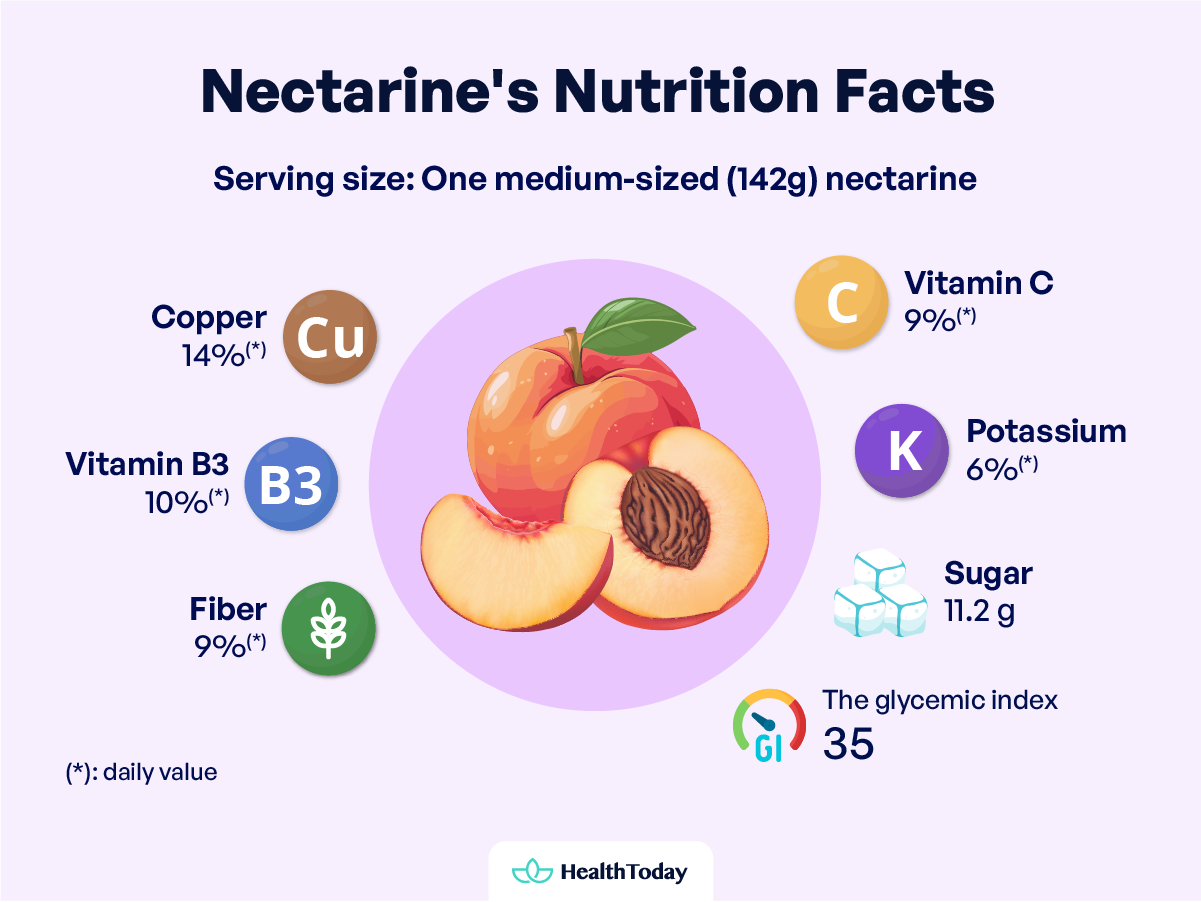
Nectarine for Diabetics
With nectarine being ranked among the most popular fruits in the United States (3), the thought of giving it up as a newly diagnosed diabetic may be daunting. However, its suitability for diabetics depends on multiple factors including the types of sugars found in the fruit, its glycemic index score, and effects on the metabolism, as discussed below:
Is it high in sugar?
A medium-sized nectarine (142 g) contains 11.2 g of sugar. However, these are natural sugars and less concerning in our diet than the ‘free’ or added sugars found in processed foods like chocolate, biscuits, and sweetened drinks.
The glycemic index
The glycemic index (GI) measures how quickly a food will raise blood sugar levels. It is a result of the combination of multiple factors in the composition and preparation of food. Some of these factors include:
- Acidity
- Ripeness
- Cooking duration
- Fiber content
- Processing methods.
Generally, greater ripeness, longer cooking time, and more processing will raise the GI. Fermentation is an exception, as it is a type of food processing that lowers the glycemic index (4); more acidity and greater amounts of fiber will also lower the GI.
The GI scale ranges from 0 to 100 and is described as follows (5):
- ‘Low GI’ foods are ones with a GI of 55
- ‘Medium GI’ foods score between 56-59
- ‘High GI’ foods have a score of 70 and above

Nectarine glycemic index
Nectarines have a low glycemic index of 35 (6). The most similar fruits, peaches and black plums, also have a GI of 35, although cherry plums have a lower GI of 25.
However, a lower glycemic index does not always mean a certain type of food is a healthier option. While the GI provides useful information on how foods will impact your blood sugars, it is only one of multiple factors you should consider in the overall balance of your diet.
Does it spike blood sugar and insulin?
Nectarines will increase blood sugar levels, increasing insulin levels to respond to this. However, this does not create as big a spike as the highest GI fruits, which include watermelon (GI: 75), dates (GI: 70), and bananas (GI:48) (6).
Tips for eating nectarine for people with diabetes
Our blood sugar levels can naturally fall too low sometimes, like when we have waited too long to eat our next meal or have been doing intensive exercise. Diabetics can also experience a blood sugar crash when they have taken too strong a dose of medication.
Eating fruit like nectarines is a great way of raising blood sugar levels back to normal levels in these situations. It also contributes towards the daily recommended fiber intake, which helps maintain a healthy heart and gut. However, diabetics should stick to the recommended portion size for nectarines, which is one piece of fruit (142 g) (2).





Best ways to eat nectarines
It is helpful to pair sweet foods like fruit with more complex foods so the body will work harder to digest and extract energy from the meal. This means it will also be slower to reach the bloodstream and impact the blood sugar.
Some great foods to pair with nectarines include unsweetened plain, natural, and Greek yogurt, which are relatively high in protein and provide greater satiation. Similarly, seeds, nuts and nut butter make another great option as they include both a high protein and fiber content. Nectarine can also be eaten as part of a salad or with whole grains like rolled porridge or steel-cut oats.
Although nectarines have a low GI, having nectarines in juice or smoothies is more likely to cause blood sugar and insulin spikes. This is because the natural sugars from the fruit are released during the juicing or blending process so that they are more quickly absorbed into the bloodstream.
Fresh vs dried nectarines – moderation for people with diabetes
Dried fruit is a fruit with most of the water taken out, which makes it shrink. If you were to take a handful of dried fruit and compare it to a handful of fresh fruit, you would be getting a lot more of the natural sugars in the handful of dried fruit. Why is that? Because you would be eating more pieces of whole fruit in a handful without even noticing.
Diabetics should, therefore, be careful to stick to the recommended portion size for dried fruit, which is one tablespoon per meal (7). One easy and fun way to eat dried fruit is to prepare a trail mix that includes some chopped dried fruit with nuts, seeds, or grains like puffed rice, which help prevent blood sugar spikes and reduce the likelihood of eating too much fruit.
Tip for buying nectarine
Choose slightly firmer, underripe fruit, which is typically lower in sugar and glycemic index due to higher levels of fiber than natural sugars.
Sticking to portion sizes can help diabetics maintain healthy blood sugar levels. It is also helpful to eat other, more complex foods containing protein and fiber alongside nectarines to help create a more satisfying snack or meal. Juice or smoothies are the least recommended form to eat nectarines due to the higher content of free sugars.
Other health benefits of nectarine
Nectarines provide a lot of nutrients for their small portion size. They may also offer some health benefits, including antioxidant activity, supporting skin and gut health, and potentially improving aspects of diabetes (8, 9, 10).
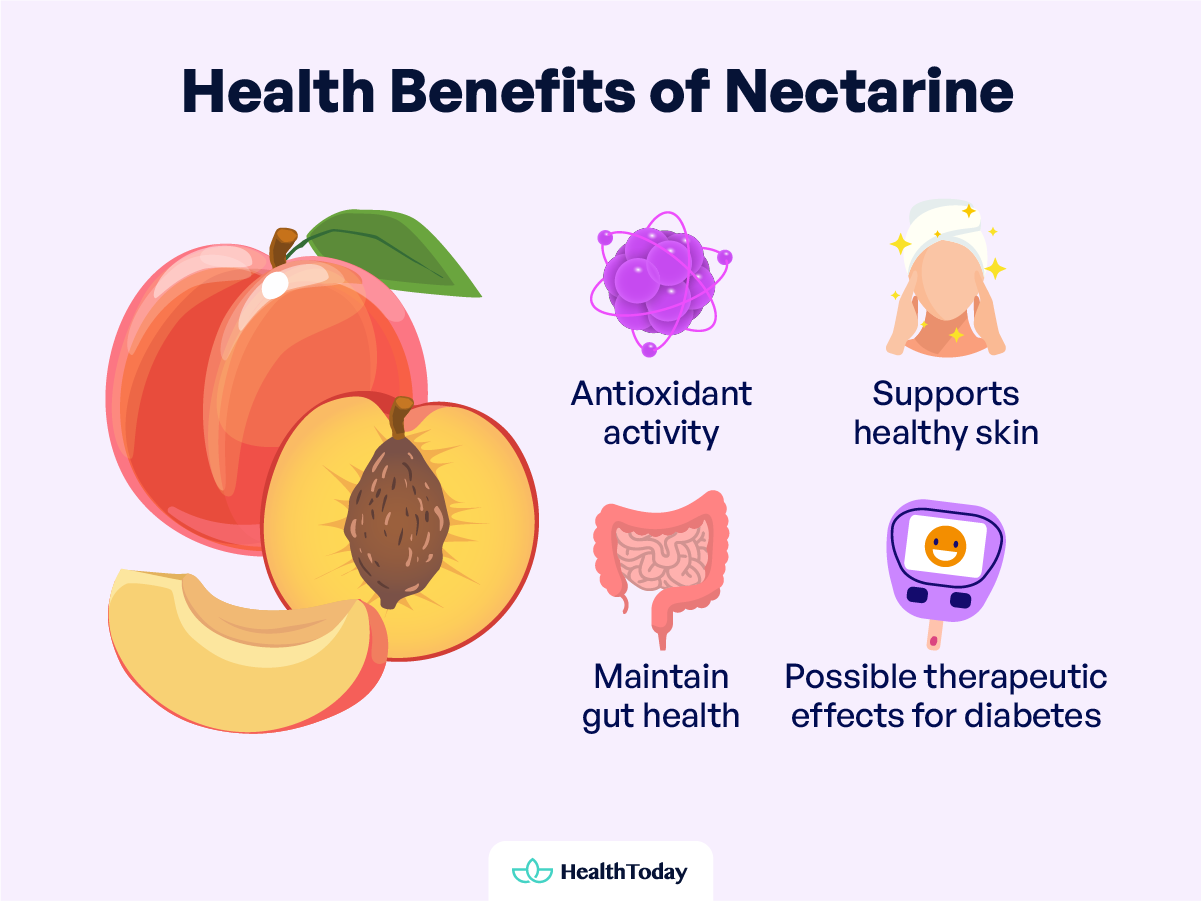

Antioxidant activity
Nectarines are a good source of vitamin C and other antioxidants, including quercetin and anthocyanins (6, 7). These compounds can help protect against cardiovascular disease and reduce inflammation (8, 9).
The antioxidant activity of a quercetin-rich extract from nectarine was demonstrated at a similar strength to pure vitamin C in an in vitro study (10).
Supports healthy skin
What we eat can also help maintain the condition of our skin. Nectarines are a good source of Vitamin B3 (niacin), which can help protect against UV damage from the sun (2, 11) and help maintain moisture (12) and skin barrier function (13, 14).
Copper is also found in nectarines (2). It helps increase the synthesis of collagen and elastin, which makes your skin look more youthful skin (15), and protects skin from oxidative damage (16, 17).
Helps maintain gut health
Unsurprisingly, our diet is fundamental to our gut health. Dietary fiber plays an important part in maintaining gut health by promoting the passage of food through our gut in good time. Nectarines contribute 7.6% towards the recommended value of 28 g fiber per day, which can help maintain a healthy gut (2).





Possible therapeutic effects for diabetes
Insulin is produced in the pancreas within specialist cells. Now, think of the pancreas as a factory and the cells as the skilled workers making a product. In Type 2 diabetes, the workers can over time, become tired and stop doing their job properly. They stop producing as much of the product – in this case, insulin – and one by one, they start to quit their job at the factory. The skilled workers are difficult to replace once they leave. This is exactly what happens in Type 2 diabetes, in the pancreas.
In an animal study of diabetes, treatment with a nectarine extract was shown to both restore the pancreas and reduce glucose levels while increasing insulin levels (18). The authors suggested that the nectarine extract could restore islet cell production of insulin, thereby helping to control blood sugar levels.
A blood sugar-lowering effect was also demonstrated by an extract from nectarines rich in an antioxidant called quercetin (10).
Who should avoid nectarine?
Not everyone can enjoy nectarines. People with pollen allergies (known as oral allergy syndrome), especially those with an allergy to the closely related peach, may also be allergic to nectarines (19).
People living with chronic kidney disease should also be careful, as the high levels of potassium in nectarines can make them unwell. If you have chronic kidney disease and are worried about eating nectarines, you should follow the advice of your doctor or dietician (20).





Summary
Not all sweet foods are unsafe for diabetics. Nectarines are a low GI food that can be enjoyed by most individuals, provided they do not have any allergies or intolerances to any of its components.
Diabetics are advised to eat fresh, whole nectarines, especially in combination with healthy dietary fats or proteins, which can further reduce the impact of the fruit on glucose and insulin metabolism.
Nectarines contain several antioxidant compounds, including Vitamin C, and can help maintain the health of the skin and gut. Some pieces of research have even shown some evidence of a therapeutic role in diabetes symptoms by nectarine extracts, although the research is very limited.
To conclude: Is nectarine good for diabetics?
It can be, indeed, if eaten mindfully.







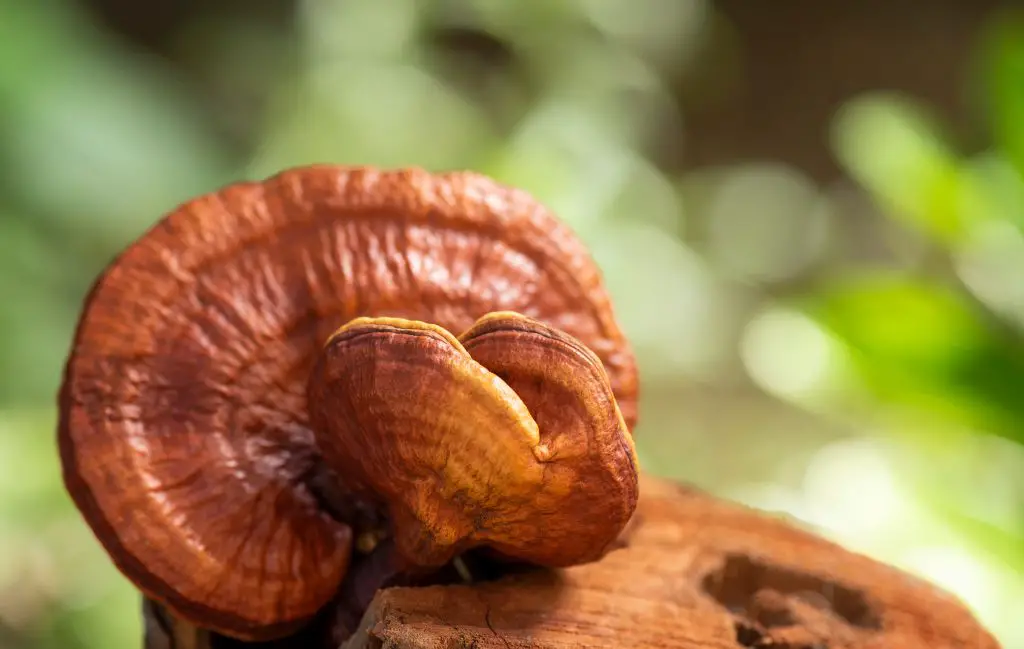



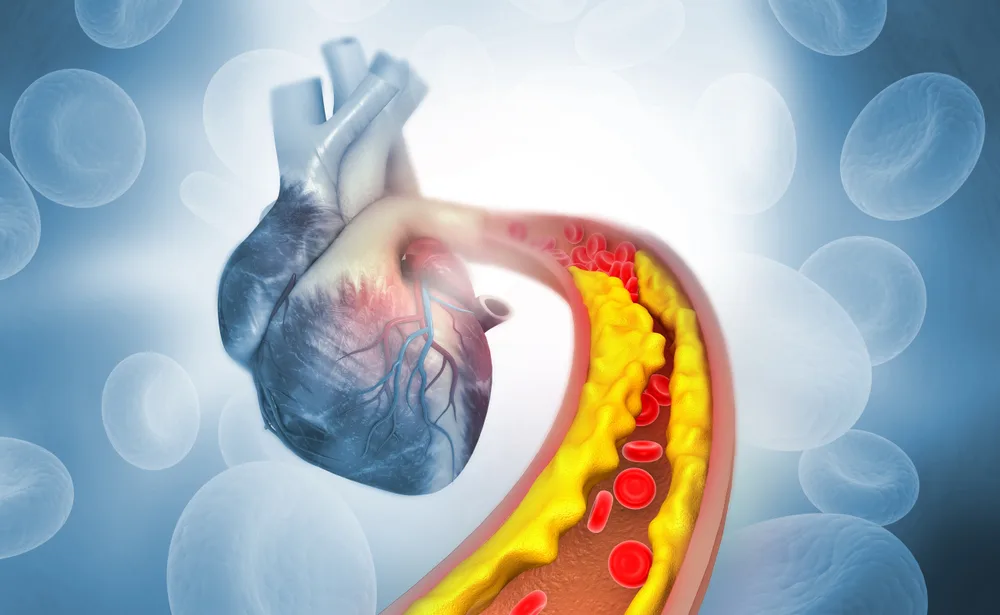


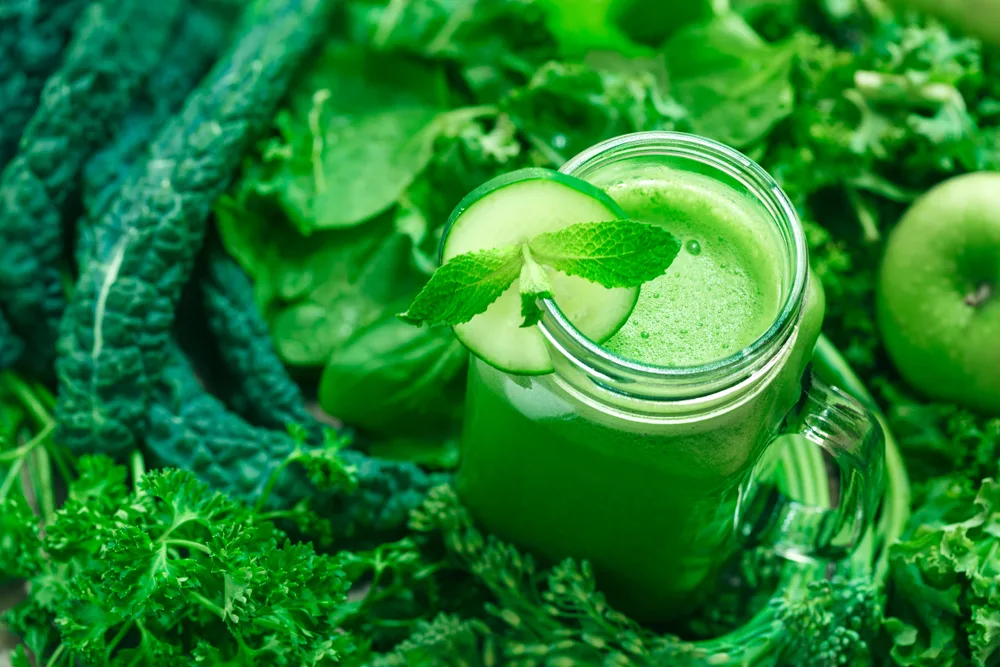


Comments
0